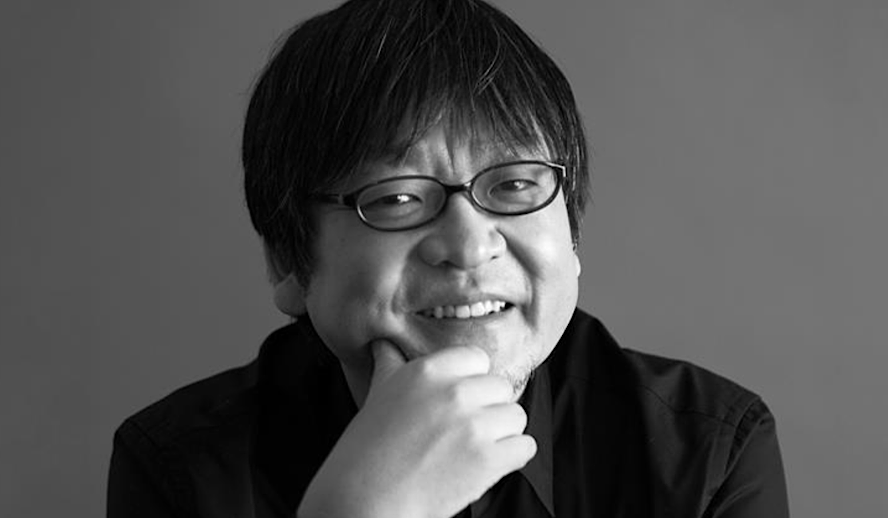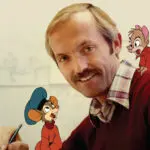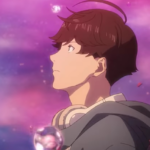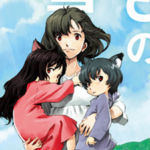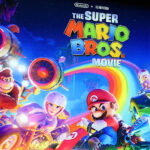Table of Contents
Video Version of this Article
Photo: Mamoru Hosoda/Studio Chizu
An Introduction to Mamoru Hosoda
In the somewhat narrow world of mainstream anime, a few names stand out: Hayao Miyazaki, Isao Takahata, Makoto Shinkai. A fourth name that comes to my mind, belonging to arguably the most consistently great anime director of the past decade or so, would be Mamoru Hosoda. Hosoda, like Shinkai, got his start at the turn of the millennium — but unlike Shinkai, whose films often feel perennial and yet youthful, Hosoda’s films feel distinctly modern; they express concerns about relationships between parents and their children, between siblings, and between all these people and modern life. Whether it be science fiction or fantasy, a Hosoda film seemingly always takes place in the “now” or just a few years from today — next Sunday A.D., as is said regularly in ‘Mystery Science Theater 3000.’ The tendency toward covering modern issues has apparently paid off, too; Hosoda remains, so far, the only anime director outside of Studio Ghibli to have gotten an Academy Award nomination for Best Animated Feature.
Things to do:
- Subscribe to The Hollywood Insider’s YouTube Channel, by clicking here.
- Limited Time Offer – FREE Subscription to The Hollywood Insider
- Click here to read more on The Hollywood Insider’s vision, values and mission statement here – Media has the responsibility to better our world – The Hollywood Insider fully focuses on substance and meaningful entertainment, against gossip and scandal, by combining entertainment, education, and philanthropy.
Hosoda started out on humble ground; his first feature-length project (as co-director alongside Shigeyasu Yamauchi) was ‘Digimon: The Movie’ in 2000. ‘Digimon: The Movie’ is a Frankenstein monster — an amalgamation of three ‘Digimon’-related short films, cut for American audiences, and two of these shorts were directed by Hosoda. The film is quite goofy, if also entertaining under certain circumstances, but the takeaway here is ‘Digimon: Our War Game’, one of Hosoda’s shorts, and the one that would act as a blueprint for one or two of his future projects. Hosoda’s solo debut feature would have been ‘Howl’s Moving Castle’, over at Studio Ghibli, but he left early in production due to creative differences. Indeed, Hosoda’s actual solo debut, ‘One Piece: Baron Omatsuri and the Secret Island’ in 2005, is often ignored when evaluating his body of work — and true enough, I haven’t seen it myself.
‘The Girl Who Leapt Through Time’: The Breakthrough
What stands as Mamoru Hosoda’s first true time in the spotlight is ‘The Girl Who Leapt Through Time’, released in 2006 and produced by Madhouse. 2006 turned out to be a watershed year for Madhouse, a major animation studio that had been around since the 1970s, with not only ‘The Girl Who Leapt Through Time’ but also ‘Paprika’, the final film from the late Satoshi Kon, another modern master who would have dominated the 2010s alongside Hosoda and Shinkai, had cancer not taken him from us. This film is a curious one; it operates on a mind-bogglingly simple premise, with Makoto (our heroine) falling into a time loop just as she is about to be killed by a train in a bicycle accident. Why is Makoto stuck repeating the same day over and over?
Related video: Come Behind The Scenes of ‘Elvis’ | Austin Butler, Tom Hanks and Baz Luhrmann
Related article: MUST WATCH – The Hollywood Insider’s CEO Pritan Ambroase’s Love Letter to Black Lives Matter – VIDEO
‘The Girl Who Leapt Through Time’ is a fun sci-fi romp that also feels weirdly insular for Hosoda; there are a few principal characters, but there isn’t much examination upon the family dynamic, which would get much more attention in later films. Without spoiling anything, I’m not fond of the explanation given for the time loop, and indeed, the third act is generally weaker than the preceding two. Even so, this is a fine choice if you want to get the uninitiated into non-Ghibli anime, and to this day, it remains one of Hosoda’s most popular outings. I don’t think it’s without meaning that the image of Makoto leaping (as seen on the poster) would later become the logo for Studio Chizu, an animation studio Hosoda co-founded in 2011. Before we get to Hosoda’s work at Studio Chizu, though, we still have one more movie at Madhouse — and, without wanting to sound hyperbolic here, it’s one of my favorite animated movies of all time.
‘Summer Wars’: The Family and the Internet
From a thematic standpoint, ‘Summer Wars’ has to be the most pivotal in Hosoda’s career, and it’s also a contender for my favorite of his. Released in 2009, and Hosoda’s last full collaboration with Madhouse, ‘Summer Wars’ is both a family drama and a cyberpunk adventure of epic proportions, with the extended (and dysfunctional) Jinnouchi family collectively acting as the film’s true protagonist. We get a scorching family chronicle, about betrayal, infidelity, theft, and forgiveness, but we also venture into the digital world of OZ, a virtual reality platform that seems somewhere between Second Life and VRChat — but more ludicrous than either. The premise of ‘Summer Wars’ is eerily similar to that of ‘Digimon: Our War Game’. Hosoda takes the skeleton of ‘Our War Game’ and not only refines it tremendously, but takes advantage of a feature-length runtime to give the premise a proper sense of scale — a grandiosity of vision that would not be outdone until ‘Belle’, more than a decade later.
Related article: A Tribute to Johnny Depp: The Actor and Musician Who Defined Range
Related video: EVOLUTION: Every Johnny Depp Role From 1984 to 2020, All Performances Exceptionally Poignant
Related article: A Tribute to the Hero & President Volodymyr Zelenskyy: Comedian/Actor, Ukraine’s President and Heroic Leader
Related article: EVOLUTION: Every Henry Cavill Role From 2001 to 2021, All Performances Exceptionally Poignant
Related article: EVOLUTION: Every Chris Evans Role From 1997 to 2020, All Performances Exceptionally Poignant
Related article: #metoo Revolution: Powerful Questions That Need Answers
Related article: FACT-CHECKED Series: Timothee Chalamet and 32 Facts about The Young Superstar
Now, despite the cyberpunk hijinks that go on, and despite the threat that the film’s antagonist poses to thousands of people, the internet is ultimately depicted as a positive force in the world. Thinking about it, Hosoda has to be one of the only mainstream directors (inside or outside of animation) who openly sympathizes with the internet’s best traits and potentials. OZ is not a perfect community, but then neither is the Jinnouchi family, and helping the former also helps the latter. It’s refreshing that Hosoda acknowledges the internet’s profound capacity to bring people thousands of miles apart together. ‘Summer Wars’ was Hosoda’s first masterpiece, one of the great animated features of the 21st century while also being for the 21st century.
‘Wolf Children’: An Unbridled Masterpiece
Cut to 2012, and Hosoda’s Madhouse days are more or less behind him, with the realm of animation (Japanese or otherwise) being particularly in flux at this time. Satoshi Kon had passed away in 2010, and while Madhouse would continue producing quality TV anime well into the 2010s, it had lost its place as a great studio for Cinema. Disney was also entering what would become a new renaissance with ‘Tangled’ in 2010 and ‘Wreck-It Ralph’ in 2012. Pixar, which had a virtual stranglehold on quality 3D animation in the 2000s, was slowly but surely losing its crown. In the midst of all this, Hosoda put out what will probably be remembered decades from now as his most culturally significant work: ‘Wolf Children’, in 2012. ‘Wolf Children’ is a deeply heartfelt (and occasionally even harrowing) look at a single mother as she tries to raise her two children; the catch is that the father was a werewolf, and the children are able to transform into wolves at will.
Related article: The Hollywood Insider’s CEO Pritan Ambroase: “The Importance of Venice Film Festival as the Protector of Cinema”
Related article: The Masters of Cinema Archives: The Hollywood Insider Pays Tribute to ‘La Vie En Rose’, Exclusive Interview with Director Olivier Dahan
Related article: – Want GUARANTEED SUCCESS? Remove these ten words from your vocabulary| Transform your life INSTANTLY
Related Video: Full Commentary on ‘Top Gun: Maverick’: Tom Cruise, Val Kilmer, Jennifer Connelly, Miles Teller
Related video: ‘Top Gun: Maverick’ Full Premiere Reactions: Tom Cruise, Val Kilmer, Jennifer Connelly, Miles Teller
Related video: EVOLUTION: Every Tom Cruise Role From 1981 to 2021, All Performances Exceptionally Poignant
‘Wolf Children’ has nothing to do with the internet; in fact, unlike Hosoda’s previous two features, this one is a straight urban fantasy. This is also the first Hosoda movie to be produced at Studio Chizu, which would serve as Hosoda’s base of operations into the present day — indeed, as is seemingly indicative of a new studio, the animation quality of ‘Wolf Children’ is not quite on par with that of ‘Summer Wars.’ Minor technical setback aside, the intimate family struggle at the heart of ‘Wolf Children’ might just help edge it out over its predecessor; it’s certainly a more relaxed film, under the direction of someone who is now more confident in his abilities, resulting in something that feels like the work of someone who is either a master of his craft or is about to become one. I want to bring up, also, how Hosoda’s filmography is generally family-friendly, in the sense that children above a certain age will not only understand everything, but will be able to take great enjoyment in it — yet mature-minded viewers are not alienated from these warm and often gentle slices of Cinema.
‘Mirai’ and ‘Belle’: A Promise Fulfilled
We’re here to talk about ‘Mirai’, released in 2018, and an Oscar nominee for Best Animated Feature — the first for a non-Ghibli anime movie. Like most of Hosoda’s filmography, ‘Mirai’ is a family ordeal — this time about a young boy who has to learn to love his baby sister, being helped by his sister… from the future. Hosoda had conjured a child protagonist or two previously, but not only is Kun unquestionably the main character, Mirai being his sister, but he is written as a fairly realistic child: he is egotistical, obnoxious, amoral, and he probably smells bad. Some people are bothered by how Kun is written, but I don’t mind a warts-and-all treatment of a child protagonist; the important thing is that he at least starts to learn the error of his ways. Feels odd to say this, given that it’s an Oscar-nominated film, but I would say ‘Mira’ is unjustly underrated.
Hosoda’s latest feature, which I’ve already reviewed for the site, don’t want to repeat myself. ‘Belle’ premiered at the Cannes Film Festival in 2021, and earlier this year, it saw a theatrical release in the States — in both cases, it garnered a healthy amount of well-earned acclaim. Truth be told, I even thought ‘Belle’ would earn a nomination at this year’s Academy Awards, but you can’t have everything. ‘Belle’ is not my favorite Mamoru Hosoda movie by any means, but it feels like the logical continuation of Hosoda’s thesis from ‘Summer Wars’, about the internet as a force for good that may actually nudge humanity in a more social direction, as opposed to anti-social. I’ve written this before, but I do feel compelled to repeat the fact that we rarely get optimistic takes on the internet, and regardless of what Hosoda’s next film will be like, it will probably continue the thread that he’s been weaving for the past twenty years.
By Brian Collins
Click here to read The Hollywood Insider’s CEO Pritan Ambroase’s love letter to Cinema, TV and Media. An excerpt from the love letter: The Hollywood Insider’s CEO/editor-in-chief Pritan Ambroase affirms, “We have the space and time for all your stories, no matter who/what/where you are. Media/Cinema/TV have a responsibility to better the world and The Hollywood Insider will continue to do so. Talent, diversity and authenticity matter in Cinema/TV, media and storytelling. In fact, I reckon that we should announce “talent-diversity-authenticity-storytelling-Cinema-Oscars-Academy-Awards” as synonyms of each other. We show respect to talent and stories regardless of their skin color, race, gender, sexuality, religion, nationality, etc., thus allowing authenticity into this system just by something as simple as accepting and showing respect to the human species’ factual diversity. We become greater just by respecting and appreciating talent in all its shapes, sizes, and forms. Award winners, which includes nominees, must be chosen on the greatness of their talent ALONE.
I am sure I am speaking for a multitude of Cinema lovers all over the world when I speak of the following sentiments that this medium of art has blessed me with. Cinema taught me about our world, at times in English and at times through the beautiful one-inch bar of subtitles. I learned from the stories in the global movies that we are all alike across all borders. Remember that one of the best symbols of many great civilizations and their prosperity has been the art they have left behind. This art can be in the form of paintings, sculptures, architecture, writings, inventions, etc. For our modern society, Cinema happens to be one of them. Cinema is more than just a form of entertainment, it is an integral part of society. I love the world uniting, be it for Cinema, TV, media, art, fashion, sport, etc. Please keep this going full speed.”
More Interesting Stories From The Hollywood Insider
– Want GUARANTEED SUCCESS? Remove these ten words from your vocabulary| Transform your life INSTANTLY
– A Tribute to Martin Scorsese: A Complete Analysis of the Life and Career of the Man Who Lives and Breathes Cinema
– Do you know the hidden messages in ‘Call Me By Your Name’? Find out behind the scenes facts in the full commentary and In-depth analysis of the cinematic masterpiece
– A Tribute To The Academy Awards: All Best Actor/Actress Speeches From The Beginning Of Oscars 1929-2019 | From Rami Malek, Leonardo DiCaprio To Denzel Washington, Halle Berry & Beyond | From Olivia Colman, Meryl Streep To Bette Davis & Beyond
– In the 32nd Year Of His Career, Keanu Reeves’ Face Continues To Reign After Launching Movies Earning Over $4.3 Billion In Total – “John Wick”, “Toy Story 4”, “Matrix”, And Many More
mamoru hosoda, mamoru hosoda, mamoru hosoda, mamoru hosoda, mamoru hosoda, mamoru hosoda, mamoru hosoda, mamoru hosoda, mamoru hosoda, mamoru hosoda, mamoru hosoda, mamoru hosoda, mamoru hosoda, mamoru hosoda, mamoru hosoda, mamoru hosoda, mamoru hosoda, mamoru hosoda, mamoru hosoda, mamoru hosoda, mamoru hosoda, mamoru hosoda, mamoru hosoda, mamoru hosoda, mamoru hosoda, mamoru hosoda, mamoru hosoda, mamoru hosoda, mamoru hosoda, mamoru hosoda, mamoru hosoda, mamoru hosoda, mamoru hosoda, mamoru hosoda, mamoru hosoda, mamoru hosoda, mamoru hosoda, mamoru hosoda, mamoru hosoda, mamoru hosoda, mamoru hosoda, mamoru hosoda


